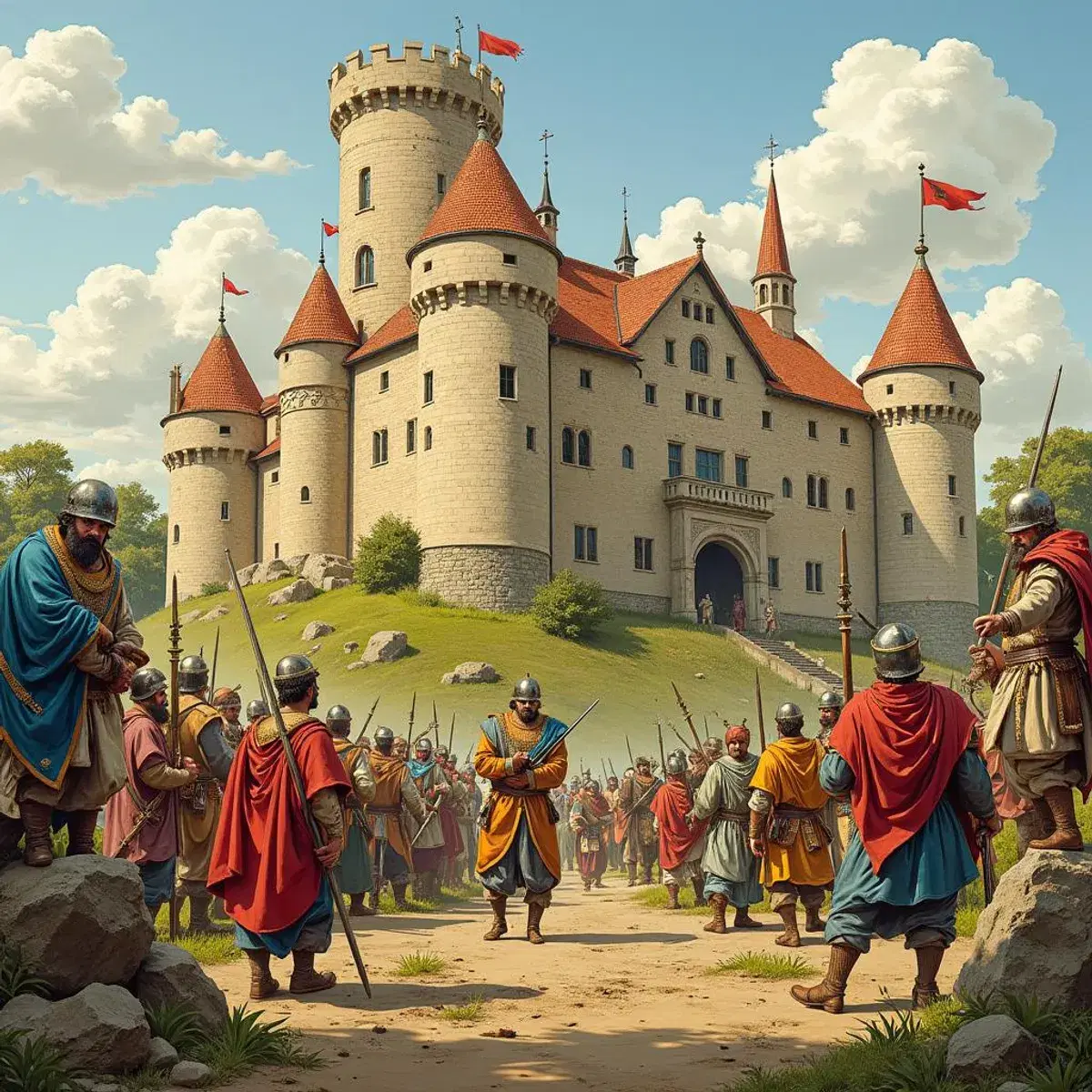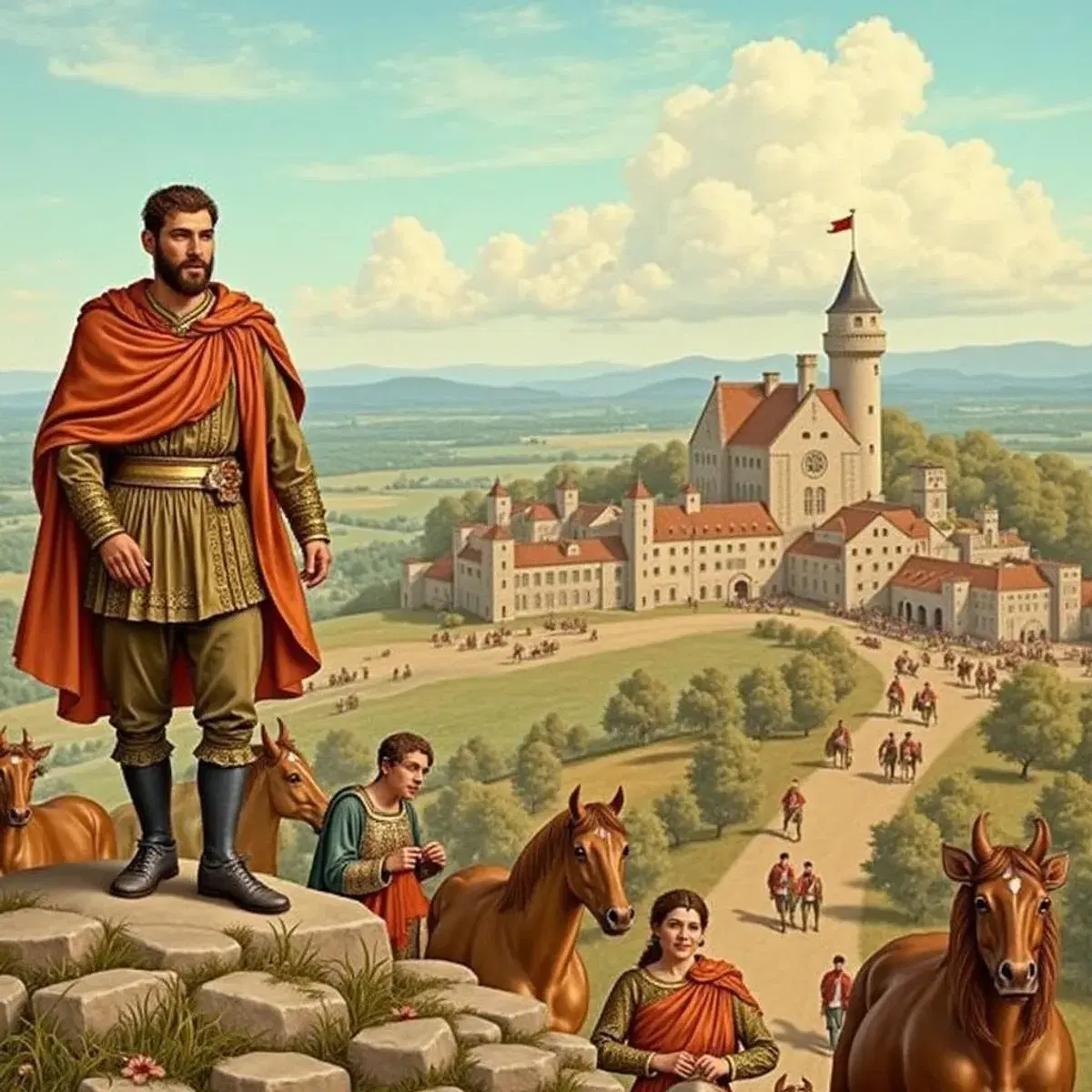Rise of Feudalism in Medieval Europe
A long time ago, during the Middle Ages, Europe was a very different place. After the Roman Empire fell, life became dangerous. People didn’t have strong governments to protect them, so they needed a new way to stay safe. This is how feudalism, a system where lords and vassals worked together, came to life. It was a system built on loyalty, land, and protection, and it changed the way people lived for hundreds of years.

Rise of Feudalism
Why Feudalism Happened
When the Roman Empire collapsed, Europe became chaotic. There were no strong armies to keep order, and invaders like Vikings and robbers made life scary. Ordinary people couldn’t defend themselves, so they turned to powerful lords who owned castles. These lords promised protection in exchange for loyalty and service. This system of promises and protection is what we now call feudalism.
How Feudalism Worked
In feudalism, a free person could ask a lord for protection by becoming his vassal. This involved a special ceremony. The person knelt before the lord, put his hands in the lord’s hands, and promised to serve him. This was called "homage." The vassal also swore an "oath of loyalty" to always be faithful to the lord. In return, the lord promised to protect the vassal and take care of him.
If the vassal already owned land, he would give it to the lord and then receive it back to use. If the vassal didn’t have land, the lord would give him some. This land, called a "fief," came with responsibilities. The vassal might need to farm it, provide soldiers, or help the lord in other ways. When a vassal died, his child could inherit the land, but only after making the same promises to the lord.
What Did Lords Get Out of It?
Lords didn’t protect vassals just to be nice—they needed something in return. Lords had to defend their castles and fight battles, and vassals were their helpers. A vassal might serve as a knight, a soldier who fought for the lord. Knights were expected to fight for about 40 days a year. They also gave advice, money, or supplies when needed. The more vassals a lord had, the stronger and more powerful he became.

peasants
Lords were also part of a bigger system. Many lords became vassals to kings or other powerful nobles. This created a chain of loyalty, where everyone, except peasants, had a role to play. At the bottom were the peasants, or serfs. They worked the land and provided food but didn’t have much freedom or power. They depended on their lords for shelter and safety.
More Than Just Fighting
Feudalism wasn’t only about battles and knights. It also became a way to govern. Since kings were weak, lords took over many jobs that governments usually did. They made laws, held trials, and even minted coins. Some lords had their own gallows to punish criminals. This meant power was divided among many lords instead of being controlled by one ruler.
From the 8th to the 11th centuries, feudalism spread across Europe. Castles appeared everywhere, and people gave up their freedom to become vassals in exchange for safety. By the 11th century, feudalism was a big part of life in places like France, England, and Germany.
Life During Feudalism
Feudalism affected everyone, even the Church. Bishops and abbots, who were supposed to focus on religion, became vassals for the land owned by the Church. Instead of being peaceful, some bishops acted like warriors and led armies to protect their land.
Knights became a symbol of the feudal system. To become a knight, boys had to train for years. They learned how to fight and serve their lords. Once they were ready, they went through a special ceremony to become knights. Knights often showed off their skills in tournaments, which were like medieval sports competitions.
Feudalism also led to new inventions in armor and castles. Knights wore chainmail and, later, full suits of armor to protect themselves. Castles became strong fortresses that could hold off attackers for a long time.

Life During Feudalism
End of Feudalism
Feudalism was strongest from the 11th to 13th centuries, but it didn’t last forever. As kings became stronger and new ways of trading and making money grew, feudalism started to fade. Even though the system disappeared, it left a big mark on Europe. It helped bring order during a chaotic time and introduced ideas about loyalty and responsibility that lasted for centuries.





.webp_1747676619394)